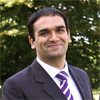The Many Pieces of the Multistakeholder Puzzle
by Daniel Fink, Ph.D., ICANN, Sao Paulo, Brazil and Mark W. Datysgeld, Researcher at the São Paulo State University (UNESP)
IEEE Internet Initiative eNewsletter, July 2017
Discuss this topic on Collabratec:
Following the end of the Cold War, a series of discussions were carried out, particularly within the United Nations, that pointed towards a more cooperative future[1]. Global politics would no longer be determined solely by states and a few powerful companies. The notion of global governance emerged and blossomed between 1992 and 1995, as more and more attention was given to the subject.
However, some experimental intergovernmental initiatives involving non-state actors have been in existence for decades. One example of such an initiative is the International Telecommunications Satellite Organization (INTELSAT), which was founded in 1964, as an amalgamation of state and private companies. Its primary purpose was to coordinate satellite operations, which paved way for the communication revolution of the twentieth century[2].
A unique example of these types of governance structures, known as the multistakeholder model[3], has also been adopted by the internet governance environment. Under the terms of the 2005 Tunis Agenda[4], it is stated (by the United Nations) that the multistakeholder internet governance process should include the opinion of the entire interested community, without particular preference or privilege given to a specific individual or group.
For internet governance it means that network operators or institutional heads aren’t the only parties able to make decisions. Instead, any party that feels affected and involved is welcome to contribute to the process. By the end of any discussions, it is expected that the final outcome will be based on the consensus of the group and can be enforced in a way that allows the community to move in a constructive direction.
It is important to note that this does not necessarily mean the outcome will be ideal. Instead, the goal is often “rough consensus”[5], a gray area where no party can claim victory or defeat, and there is enough room for all to benefit. There will always be parties that will come out of the process slightly better or worse off, but the aim is to make it as inclusive as possible.
The way the multistakeholder model is applied differs according to the sector in question. The International Organization for Standardization (ISO), for instance, requires participants to demonstrate credentials related to engineering or other similar expertise before they can contribute to the decision making process. However, the internet governance communities tend to encourage contributions from any interested parties, regardless of their credentials or background experience.
Given its transnational nature, it makes senses that the internet has a differentiated method of governance. One may say it is inspired in its technical design: data traffic across the worldwide network of computers is routed in a myriad of paths. Geographical points, nationalities or boundaries are quite transparent to the system itself. Despite a great deal of different technologies and extensive number of manufacturers/operators, the internet works as one single transnational network.
Understanding such a structure resembles the assembling of a puzzle. It is only by means of combining different pieces that the whole picture can be seen. At the base level, a physical structure of cables and electromagnetic waves connects the world, but without coordinated decisions regarding a structured manner for them to operate, they serve little purpose. The Internet Engineering Task Force (IETF) is the multistakeholder body responsible for managing the standards that define the concept of the internet as we understand it today, by creating voluntary standards to maintain and improve its usability and interoperability.
Once standards are adopted, there is a need for them to be usable and deployed by organizations like the Internet Corporation for Assigned Names and Numbers (ICANN). ICANN was established in 1998 to ensure stable and secure operation of the internet's unique identifier systems. It is structured and evolves in a way that everyone has a voice in developing policy frameworks. ICANN’s community is made up of a wide mix of governments, civil society advocates, individuals, businesses, organizations, registries, registrars, internet service providers (ISPs), Internet Protocol (IP) interests, for-profit companies and non-profit organizations[7].
The policy frameworks follow a ‘bottom-up’ approach[6], where anyone in the community is able to provide input via its respective group of representation. In terms of structure, a good example of the practiced ‘bottom-up’ approach at ICANN is the ambitious representation of the 2.1 billion internet users formed by the so called At- Large Advisory Committee (ALAC). As Olivier Crépin-Leblond described well in his article[8], ALAC is divided into five organizations covering all continents. ALAC is focused on collecting thoughts of final users “at the edge” and converting them into inputs to the formal policy making process. Equal footing among other stakeholders, such as governments and the private sector, is assured by several mechanisms, including a voting seat on the board of directors, participation in cross-community working groups and a mandate to provide policy advice in the full spectrum of discussions. It relies heavily on the internet itself to reach out and harvest contributions from over 200 structures composed of civil society volunteers.
In terms of substance, a heated debate that has been ongoing for years and that reached its apex in 2017 concerns the use of geography-related terms in domain names. Each stakeholder group holds a particular view on the issue. To move the effort forward, the community is employing innovative measures such as external mediation to come to a rough consensus. Progress may be slow, but it is constant and in continuous evolution.
Therefore, ICANN’s main function is to provide a structure so that the set of rules that direct the future of the Domain Name System (DNS) is decided in a consensual way with its own conflict mitigating mechanisms.
This approach can be considered novel, until one realizes that this system has been running for almost two decades in a stable, resilient and secure manner. It allowed the internet to grow rapidly and serve its public purpose. Future technological developments may see the emergence of many new models of participatory governance, and the currently operational models might serve as an inspiration that will shape these developments.
References:
[1] J. N. Rosenau, “Governance in the Twenty-First Century,” J. Global Governance, vol. 1, no. 1, pp. 13–43, 1995.
[2] J. S. Barkin, International Organization: Theories and Institutions. New York City, NY: Palgrave Macmillian, 2006.
[3] L. DeNardis and M. Raymon, “Thinking clearly about multistakeholder Internet Governance,” Eighth Annual GigaNet Symposium, Bali, 2013.
[4] United Nations. (2005, November 18). Tunis Agenda for the Information Society [Online]. Available: www.itu.int/net/wsis/docs2/tunis/off/6rev1.html
[5] A. L. Russell, “‘Rough Consensus and Running Code’ and the Internet-OSI Standards War,” J. IEEE Annals of the History of Computing, vol. 28, no. 3, pp. 48-61, 2006.
[6] K. Hafner and M. Lyon, Where Wizards Stay Up Late: The Origins of The Internet. New York City, NY: Simon & Schuster, 1998.
[7] J. Kurbalija, An Introduction to Internet Governance. Geneva:DiploFoundation, 2016.
[8] O. M. J. Crépin-Leblond, “Bottom Up vs. Top Down: ICANN’s At Large in Internet Governance” MIND 2 - Internet Policy Making, 2011. http://www.collaboratory.de/w/Bottom_Up_vs._Top_Down:_ICANN%E2%80%99s_At_Large_in_Internet_Governance
 Daniel Fink, Ph.D.
Daniel Fink, Ph.D.
Electrical Engineer graduated in PUCRS, Daniel joined ICANN in May 2014 and is based in Sao Paulo, Brazil. In his previous position he was Head of Science and Technology for the Embassy of Brazil in Seoul and holds a PhD in Management Science from the Korea Advanced Institute of Science and Technology (KAIST). Daniel was also the Executive Director for the NETmundial secretariat.
 Mark W. Datysgeld
Mark W. Datysgeld
Researcher at the São Paulo State University (UNESP), holding a BA and Master’s degree in International Relations with a focus on Internet Governance and the impacts of the Digital Revolution on policymaking. He is also the coordinator of the “Networks, technology and modernity” area of IPPRI/UNESP’s research group Centre for International Analysis and Studies (NEAI), as well as leading the international open Internet Governance course Governance Primer.
Editor:
 Dr. Mohammad Saud Khan
Dr. Mohammad Saud Khan
Dr. Mohammad Saud Khan is a Lecturer in the area of Strategic Innovation and Entrepreneurship. Before taking up this role, he was positioned as a Postdoctoral researcher at the University of Southern Denmark. Having a background in Mechatronics (Robotics & Automation) Engineering, he worked as a field engineer in the oil and gas industry with Schlumberger Oilfield Services in Bahrain, Saudi Arabia and United Kingdom. In addition to his involvement in several consulting assignments, his corporate experience includes a project on “Open Innovation” with Agfa Gevaert, Belgium.
Saud’s research work has largely been focused on investigating entrepreneurial teams within high-tech business incubators. His work has been presented and published at renowned international conferences and management journals.
He is a frequent reviewer for prestigious academic conferences and journals such as Academy of Management Annual Meeting, European Academy of Management, Management Decision, International Journal of Entrepreneurial Behaviour and Research, Journal of Managerial Psychology and Creativity and Innovation Management.
Research Interests
- Entrepreneurship (especially High-Tech Entrepreneurship).
- Innovation Management (especially Implications of 3D printing and Big Data).
- Uncertainty management with respect to people, organization and technology



